We replace the master cylinder in case of the following faults:
- - incomplete release of all wheels (jamming of the master cylinder piston);
- - "failure" of the brake pedal (wear of the cuffs, breakage of cylinder parts).
Repairing the master cylinder usually does not lead to the desired result, so the master cylinder should be replaced.
Prepare the car for the work. Disconnect the negative terminal of the battery.
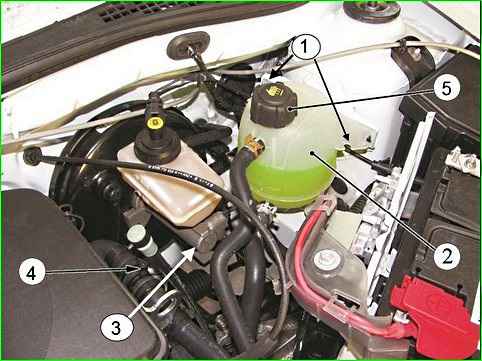
Using a 10 mm socket with an extension, unscrew the two nuts 1 (Figure 1) securing the expansion tank 2 and move the tank to the side without draining the coolant.
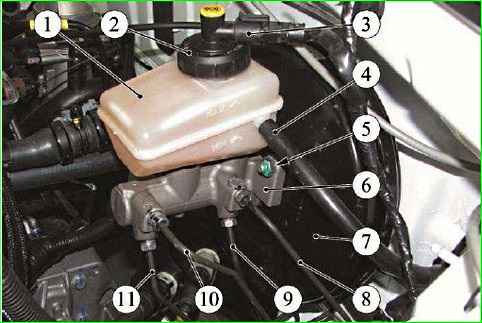
Disconnect block 3, figure 2, of the wiring harness from the brake fluid level sensor.
Unscrew and remove plug 2 together with the brake fluid level sensor.
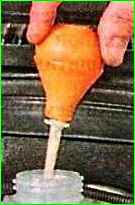
Pumping out brake fluid from the reservoir, figure 3.
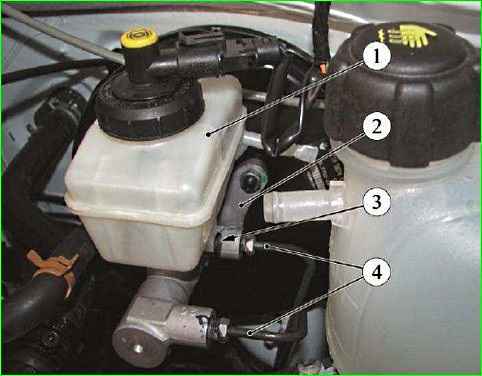
Remove the retainer 3, Figure 4, fastening the reservoir to the brake master cylinder, remove the reservoir and install plugs in the holes of the master cylinder.
Using a special key for brake pipes, disconnect the fittings of the brake pipes 4 from the brake master cylinder 2, move the pipes to the side and install technological plugs in the holes of the master cylinder and on the brake pipes (you can use plugs from the brake bleeder fittings).
Unscrew the two nuts 5, Figure 2, fastening the brake master cylinder 6 to the vacuum booster 7 and remove the cylinder (replaceable head 13, extension, ratchet wrench).
Installation
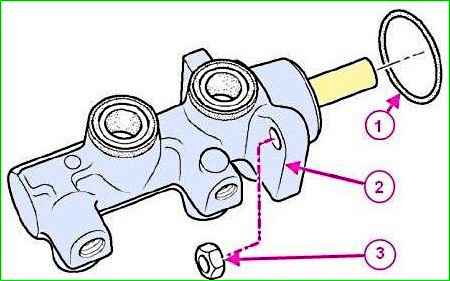
Before installation, be sure to replace the sealing ring 1, Figure 5, of the brake master cylinder 2.
If the working fluid from the brake master cylinder leaks into the vacuum booster, be sure to replace the brake master cylinder - vacuum booster unit.
A brake booster with a rubber diaphragm that has been contaminated with brake fluid becomes unsuitable for further use.
Install the brake master cylinder in place and align it with the vacuum booster so that the booster plunger enters the socket in the master cylinder body.
Fasten the brake master cylinder to the vacuum booster body with two nuts. Tightening torque of nuts 21 Nm (2.1 kgf.m) (replaceable head 13, extension, ratchet wrench, torque wrench).
Remove plugs from brake pipes and openings of the brake master cylinder, connect brake pipes to the master cylinder and tighten the fittings. Tightening torque of fittings 14 Nm (1.4 kgf.m)
Remove plugs from openings of the brake master cylinder, install the hydraulic reservoir on the cylinder and secure it with a retainer.
Reinstall the expansion tank 2, Fig. 1, and secure with two nuts 1. Tightening torque of nuts 8 Nm (0.8 kgf.m) (replaceable head 10, extension and ratchet, torque wrench).
Perform bleeding of the brake system and clutch hydraulic drive.
Tighten the brake cylinder reservoir cap and connect the wiring harness block to the brake fluid level indicator sensor.
Check the efficiency of the working brake system.





